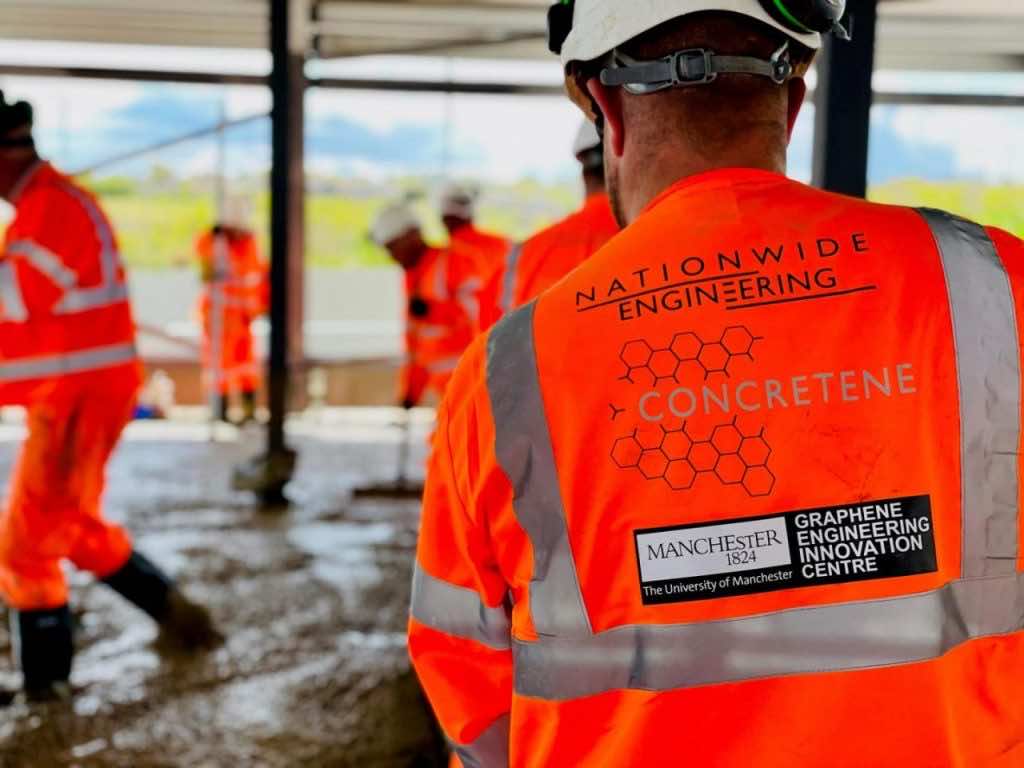The world’s first graphene-enhanced concrete slab poured in England by researchers from the University of Manchester.
The idea of replacing concrete with graphene brings along cutting of the carbon footprint of concrete, which poses environmental hazards given the mass use of concrete in building structures and roads worldwide.
With some recent researches, confidence in the use of graphene is increasing given the wonder material could bring down the carbon footprint of concrete and serves as the only viable substitute of the material.
The use of graphene was limited to testing and research, however, that barrier is now being broken by the Manchester University researchers who are deploying the material they call “Concretene” to construct the foundations of a new gym in the U.K.

In recent times, graphene has surfaced as the world’s strongest artificial material and could play a substitute to concrete in the world of construction. Some recent studies found that the material could be used to build stronger and more water-resistant structures if mixed with concrete in the construction processes.
Construction company “Nationwide Engineering” and the researchers from the University of Manchester poured concretene in collaboration to build the base structure of the new gym.
Researchers made a tiny amount of graphene added to the mix of water and cement. The newfound material was witnessed at microscopic levels and it was revealed that it formed a 30 percent stronger bond than conventional concrete.
“We have produced a graphene-based additive mixture that is non-disruptive at the point of use,” says Dr. Craig Dawson, from the University of Manchester. “That means we can dose our additive directly at the batching plant where the concrete is being produced as part of their existing system, so there’s no change to production or to the construction guys laying the floor.”
The use of the Concretene to build the Southern Quarter Gym near Stonehenge serves as the first successful basis of the material use to build a sound and more sustainable structure than compared to the structures built using simple concrete mix. Alongside the enhanced strength, the material also comes decreasing the carbon footprint, which causes a serious environmental hazard and accounts for eight percent of the global carbon emissions with structures built with concrete.
The above stated are not the only added utilities of the graphene. When it gets added to a cement mix, it forms a stronger paste. Even though graphene comes at 5 percent more cost than conventionally used material, still it would save 10 to 20 percent in costs as the material brings along more strength and needs to be used in lesser amounts than compared to cement.
“We are thrilled to have developed and constructed this game-changing, graphene-enhanced concrete on a real project,” says Alex McDermott, co-founder of Nationwide Engineering. “Together with our partners at The University of Manchester’s Graphene Engineering Innovation Centre and structural engineers HBPW Consulting, we are rapidly evolving our knowledge and experience and are positioned for wider industry deployment through our construction frameworks, becoming the go-to company for graphene-enhanced concrete.”


